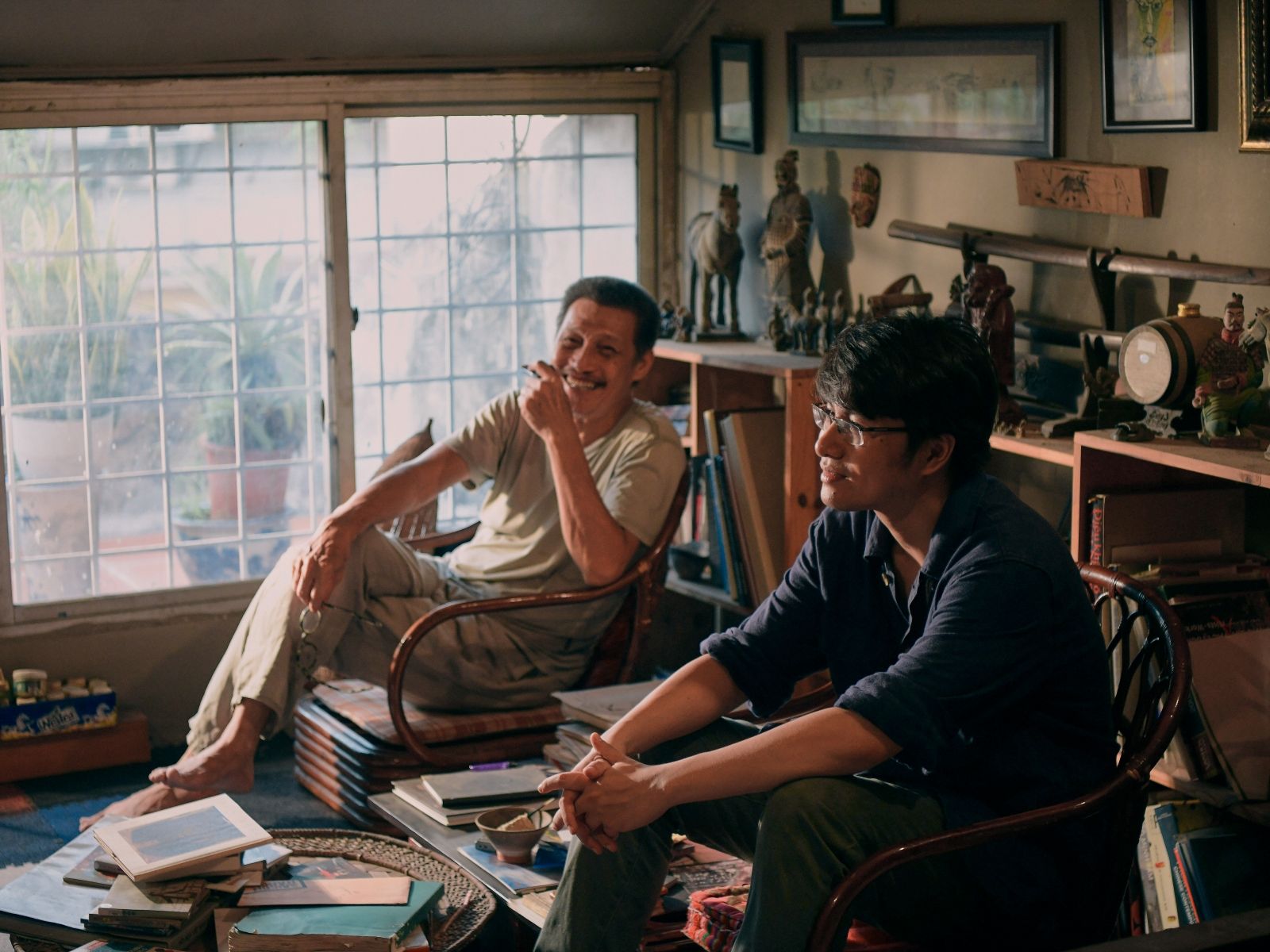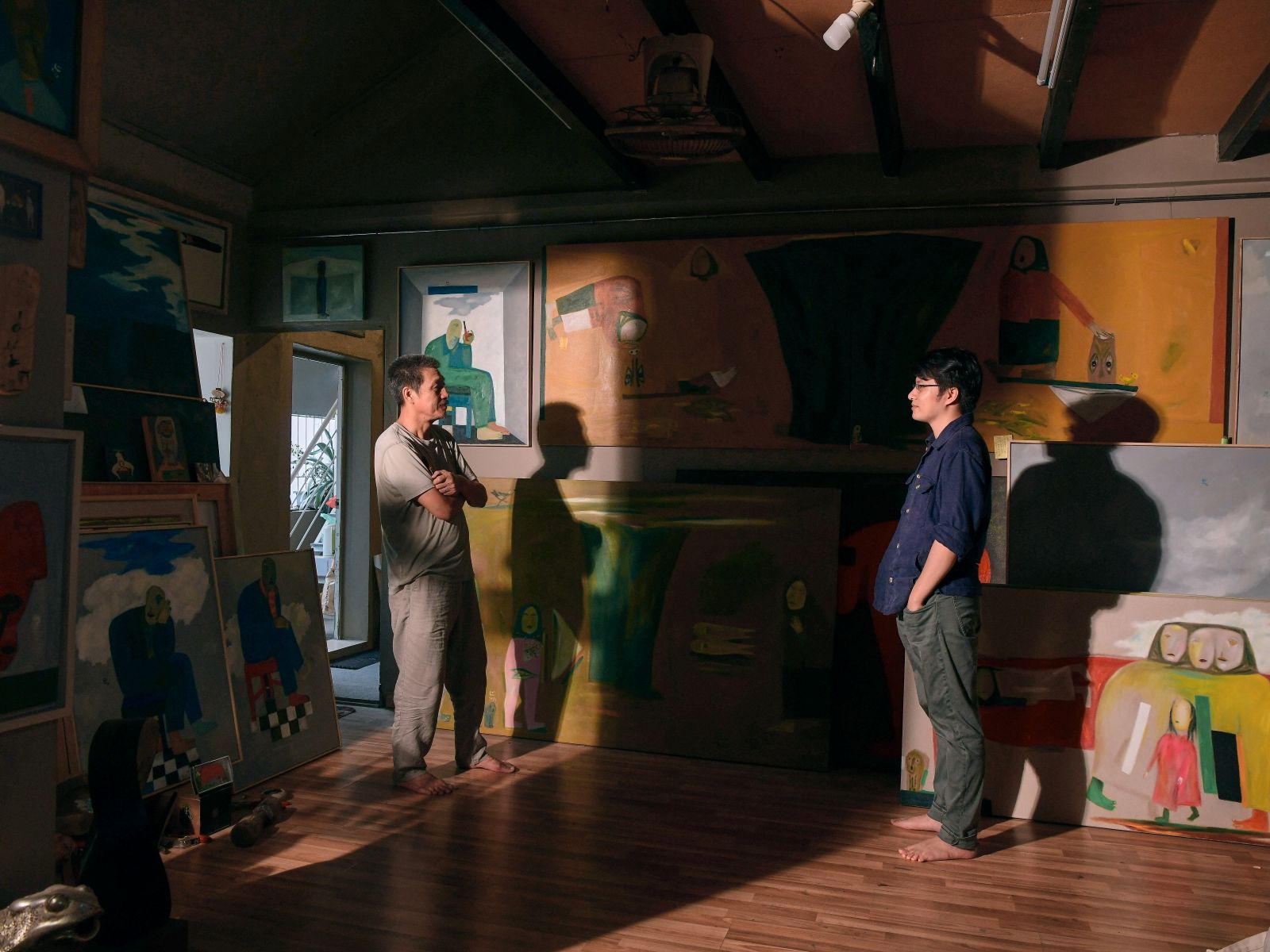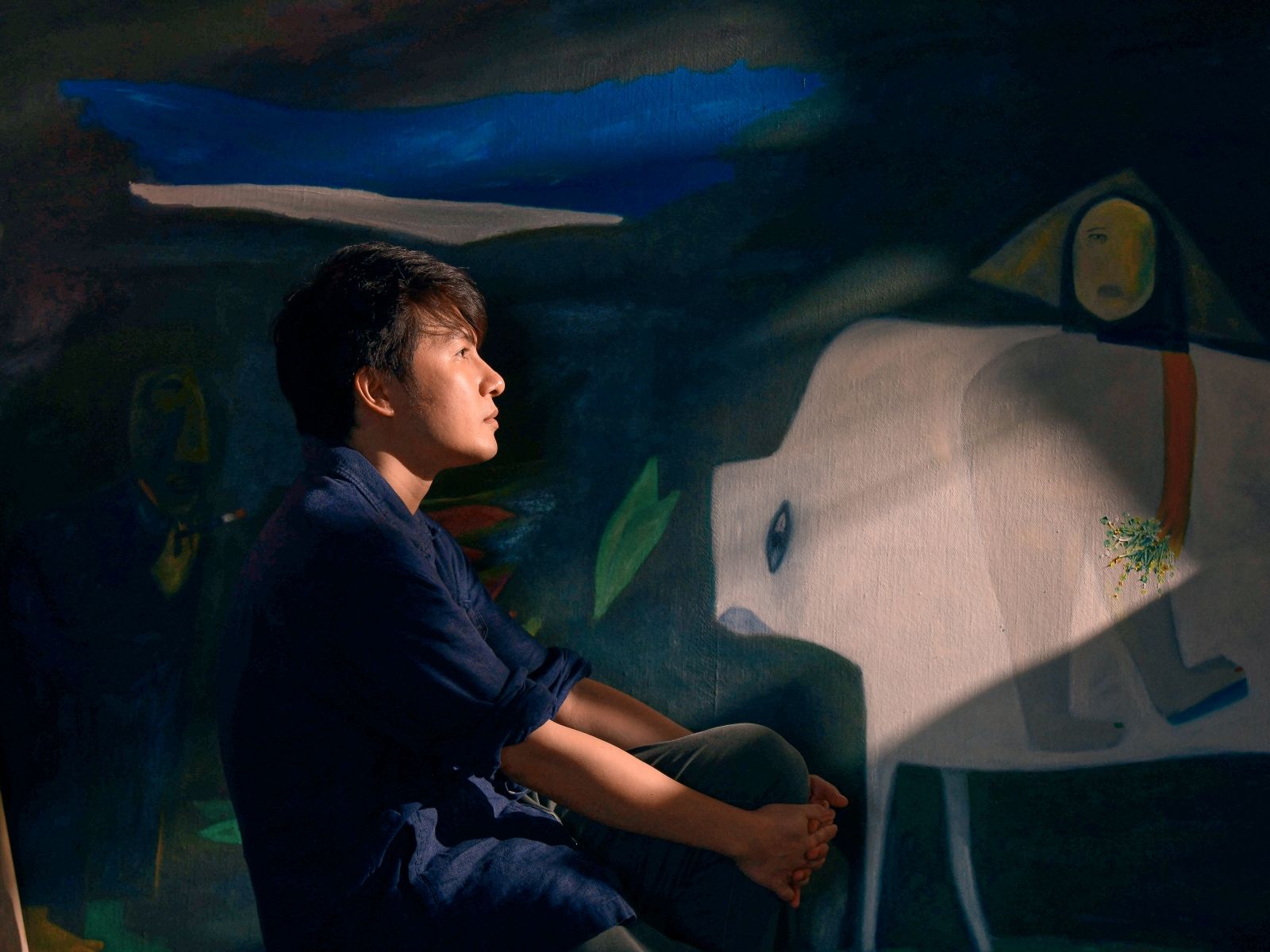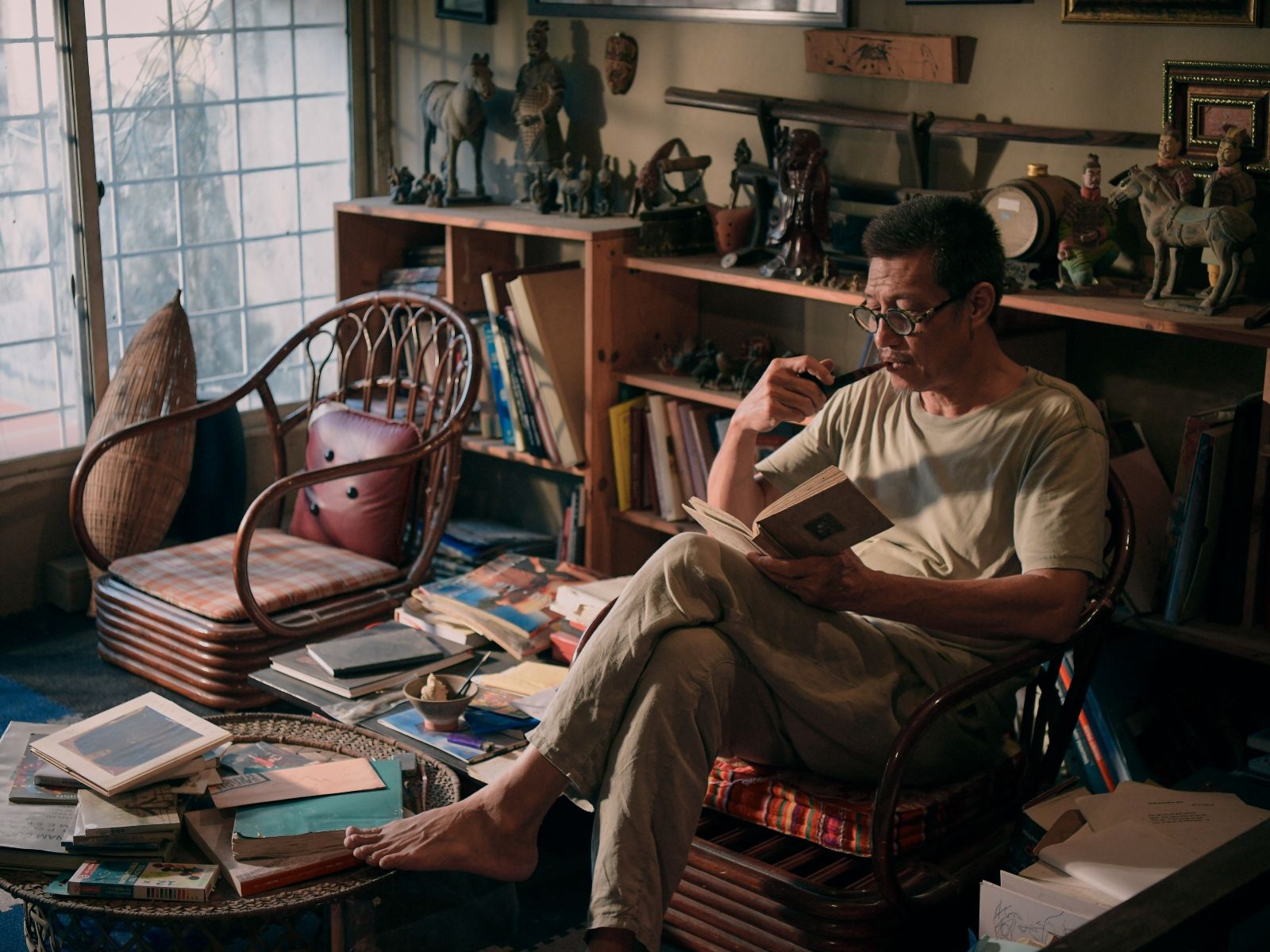This article was published from the original print feature in Tatler Vietnam, October 2024 – Family & Legacy.
In the studio of father and son Ha Tri Hieu and Ha Nguyen Long, heritage and art effortlessly converge.
The conversation unfolds in the studio of Ha Tri Hieu and Ha Nguyen Long, a space where heritage and art effortlessly converge. Although each has built an esteemed reputation both in Vietnam and internationally, few realise they are father and son—a relationship marked by shared insights into their careers, lives, and creative journeys.
Seated together, we recorded a candid exchange between two generations of artistic visionaries. One is a pioneering artist; the other, a stage director, spatial designer, and art director. Together, they explored the fluidity of heritage, reflecting on the threads of “connection” and “continuity” that shape the future of art.
For many years, Ha Tri Hieu’s name has been synonymous with the Gang of Five, a movement that emerged during a pivotal era of Vietnamese history, society, and culture in the 1990s. Can you share your artistic journey and how you have continued to evolve beyond your own successes?
Ha Tri Hieu (HTH): Rural landscapes were a prevalent theme in Vietnamese art at the time. However, if we only viewed the countryside through simple pastoral scenes, the previous generations of artists had already mastered that approach. As a young painter, I sought an alternative path—perhaps fate intervened, guiding me to discover my own distinct space in which to create.
Friends often ask why we are so resolute in our pursuit of change. For an artist, “self-discovery” is paramount. It requires continuous learning—reading, listening, observing, and engaging with both the artistic community and the broader world. Yet, each individual absorbs these influences in different ways. We must know how to filter, distil, and excavate from within. To me, that inner wellspring draws from our ancestors, our forebears, and ultimately, the essence of this nation.
In 2017, while preparing for the exhibition Gang of Five: Lac Buoc Tan Ky, I embarked on a transformation, adopting a new theoretical and conceptual approach to painting. I often refer to it—partly in jest—as “separation”: the process of evolution, of translating inherited creative genes into a new artistic philosophy. By 2023, with my series I and I, I consciously sought to bring closure to an earlier chapter of my work. This was my way of stepping away from the visual language that had defined me—the rustic scenes, the cows, the bamboo groves, the rural women—all of which had become synonymous with the name Ha Tri Hieu in Vietnamese art.
Beyond the inevitable tensions between artistic generations, there also exists an internal impulse for transformation. Yet, not all artists feel the need to change. Some follow a singular creative trajectory throughout their lives. Personally, I have always sought newness. The real challenge lies not in change itself but in ensuring that change feels like a natural evolution rather than an abrupt disruption.

The son of artist Ha Tri Hieu, Ha Nguyen Long is currently a stage director, spatial designer, and art director of XPLUSX Studio—an independent creative space specialising in spatial design and the performing arts in both France and Vietnam. Having grown up surrounded by his father’s artworks and exposed from an early age to his parents’ circle of artist friends, was the artistic path always intrinsically linked to his life and childhood dreams? When did he first begin creating art?
Ha Nguyen Long (HNL): My desire to make art came to me quite late—during my studies at the Vietnam University of Fine Arts. I was always aware that everyone around me was creating art, yet I had no real understanding of what I was making beyond what I could see. I had not yet separated it, nor grasped its significance. I had not connected it to my own being. It was only when I found myself in an environment where I was physically making something with my hands that the feeling took root. The memories of my childhood resurfaced, and for the first time, I experienced what people often call the urge to create—an impulse to craft something for myself, in my own visual language.
Growing up in a home quite literally filled with paintings, I have many vivid memories, but one stands out above all. It was the first moment I felt that I could be something beyond an artist—that I could inhabit a different creative realm. That realisation came when I stood before a large painting that my father had left me. I must have been seven or eight years old—the first time I drew freely, outside the confines of a school assignment. It was an overwhelming sensation, as though I were being drawn into another dimension, immersed in a space brimming with emotion. That was when I began creating my first images.
At the time, I experimented with liquid black and white ink, letting droplets flow and merge into patterns, forming a space unlike anything I had ever seen—even in my imagination. As I stood before the painting, I felt as though I were inside it, shrinking into each drop of water. That moment shaped the way I visualised the world, bridging the realms of two-dimensional and three-dimensional space. Looking back, I realise that this memory was perhaps the defining shift in my artistic perspective—the moment when the “boy” Long first glimpsed his own creative path.




